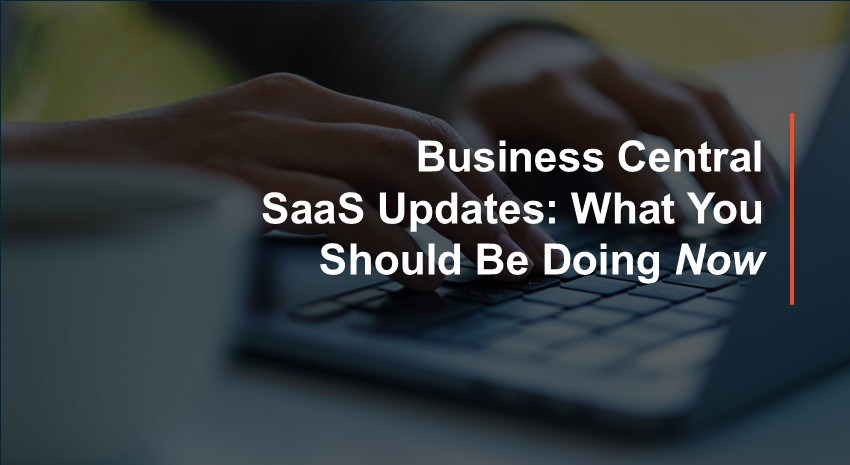Why Business Central Updates Aren’t Optional—and What to Do About It

Twice a year, Microsoft releases major updates to Dynamics 365 Business Central. These updates promise new features, performance improvements, and security enhancements—but for many organizations, they also bring uncertainty, risk, and a lot of work.
Whether you’re in finance, IT, or operations, staying current on Business Central isn’t just a technical task—it’s a strategic necessity.
In this article, we’ll break down how the Business Central update process works, why you can’t afford to ignore it, and what your team can do to make updates smoother, safer, and far less stressful.
What are Business Central updates and why do they matter?
Microsoft releases two major updates per year—typically in April (Wave 1) and October (Wave 2)—plus monthly minor updates. Each major release introduces new functionality and enhancements based on user feedback and Microsoft’s roadmap for continuous improvement.
Unlike traditional on-premises systems, updates cannot be skipped or indefinitely delayed in Business Central’s cloud environment. Microsoft gives you a grace period if you request it, but eventually, your environment will be updated automatically.
That means:
- Customizations or extensions may break if they’re not compatible with Microsoft’s code changes
- Key processes could be disrupted
- Integrations might fail
- Your team has a tight window to test and adapt before the update goes live
What can go wrong if you ignore updates?
Many organizations underestimate the complexity of Business Central updates—until something breaks. Here are just a few of the issues we’ve seen:
- Custom reports no longer pull the correct data
- Integrations with Power BI, Shopify, or CRMs stop syncing
- Custom apps or extensions become incompatible
- Users are locked out, or their permissions change unexpectedly
- Month-end close is delayed due to unexpected system behavior
These disruptions affect more than just IT—they delay invoicing, reporting, inventory planning, and other critical business functions.
How the update process should work
To minimize risk, companies need a structured approach to Business Central updates. Here’s what a best-practice update process looks like:
1. Review the release notes
Before proceeding, your team should carefully review the upcoming release’s changes. Microsoft publishes detailed documentation outlining new features but does not include deprecated code, functionality, or compatibility changes.
2. Deploy to a sandbox
Next, create a sandbox environment and apply the new version. This gives your team a safe place to:
- Restore a copy of your production environment
- Test standard workflows and reports
- Check third-party extensions and integrations
- Identify and resolve issues early
3. Run Regression and User Acceptance Testing (UAT)
Involve users from accounting, sales, operations, and IT to test core business processes. Regression testing ensures that existing processes still work, while UAT confirms that end-users can do their jobs without surprises.
4. Plan for go-live and support
After successful testing, plan your rollout. Make sure users know what’s changing and when. Post-update monitoring is also critical to catch any lingering issues quickly.
Why so many teams struggle with updates
The challenge isn’t knowledge—it’s capacity. Most internal IT and finance teams are already stretched thin. Testing updates often gets pushed to the back burner—until it’s too late.
Common blockers include:
- Lack of a sandbox or testing plan
- No time to review or understand release notes
- In-house customizations that break with new or deprecated code
- Inconsistent documentation of business processes
- Fear of downtime during busy periods (like month-end or year-end)
The good news: You don’t have to do this alone
At ArcherPoint, we’ve seen it all—from clients who didn’t test to those who spent days recovering from an update that broke key reports or customizations. That’s why we created Business Central release management services.
We handle:
- Reviewing release notes
- Testing in a sandbox
- Regression testing of key workflows
- Communicating changes
- Resolving compatibility issues
- Guiding your team through go-live
So you can stay current, secure, and focused on running your business, not your ERP.
What to do next
If your team hasn’t started preparing for the next update, now’s the time. Here are three steps you can take today:
- Download our free checklist: Is your team ready for the next Business Central update?
- Talk to our experts: We’ll assess your current update process—no strings attached.
- Stay informed: Subscribe to our blog for updates, news, best practices, and Business Central tips.
Final thoughts
Business Central updates aren’t just a Microsoft requirement—they’re a business imperative. Whether you’re in finance or IT, your systems need to be reliable, secure, and up to date. And if you’re doing it alone, you’re taking on more risk than you need to.
Let us help you stay ahead—with less stress and more confidence. Ready to stop dreading Business Central updates? Let’s talk.
Trending Posts
Stay Informed
Choose Your Preferences
"*required" indicates required fields


